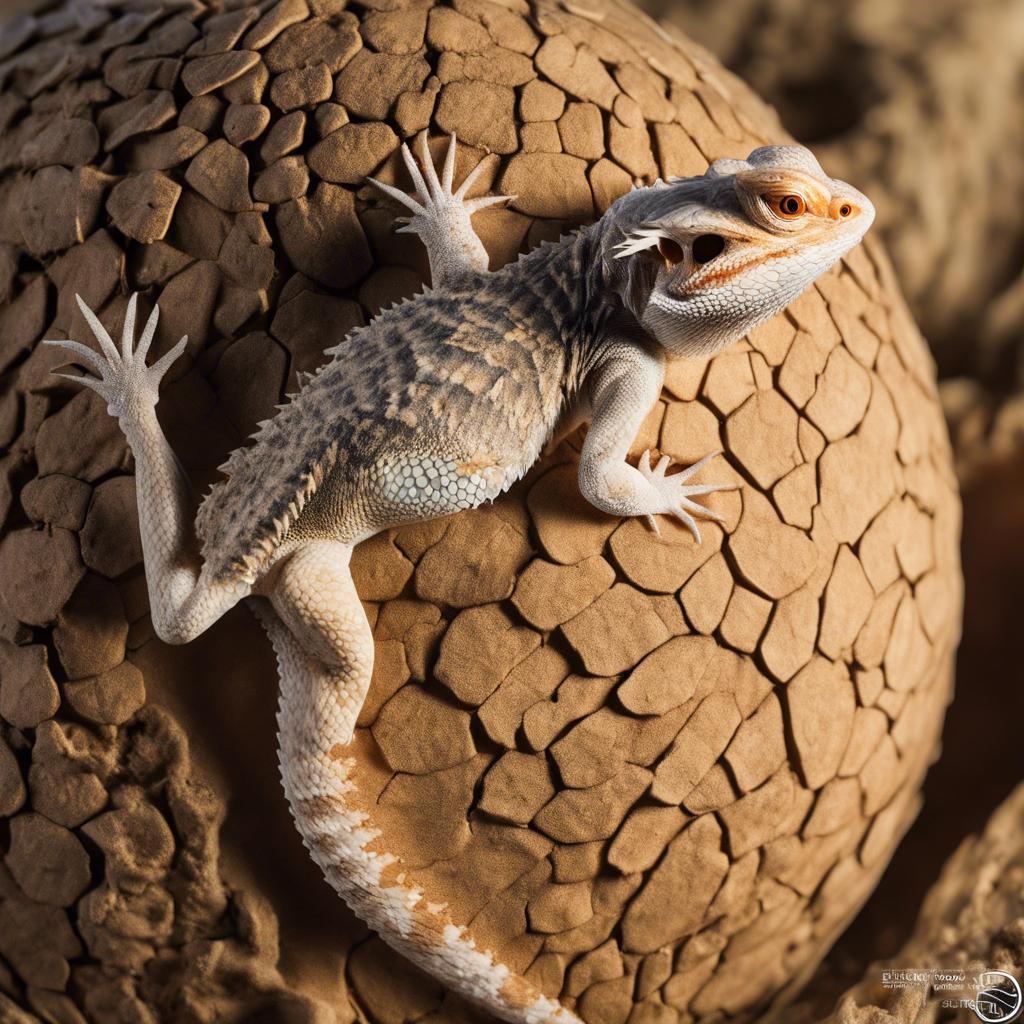Bearded dragons are popular reptile pets known for their unique appearance and docile nature. These lizards are native to Australia and are named for the spiky beard-like scales on their throats. One of the most fascinating aspects of bearded dragons is their ability to lay eggs. Female bearded dragons can lay clutches of eggs, which must be properly incubated in order to successfully hatch. Incubation is a crucial process that requires careful attention to temperature, humidity, and other factors to ensure the health and survival of the developing embryos.
Key Takeaways
- Bearded dragon eggs require specific temperature and humidity levels for successful incubation.
- The incubation period for bearded dragon eggs is typically around 60 days.
- Factors such as genetics, temperature, and humidity can affect the hatching time of bearded dragon eggs.
- Signs of bearded dragon egg hatching include movement and a visible crack in the eggshell.
- Common problems during incubation include mold growth and improper temperature/humidity levels.
Understanding the Incubation Period of Bearded Dragon Eggs
The incubation period for bearded dragon eggs refers to the time it takes for the eggs to develop and hatch. On average, bearded dragon eggs have an incubation period of around 60 to 70 days. However, it's important to note that this can vary depending on various factors such as temperature, genetics, and egg health.
Factors Affecting Bearded Dragon Egg Hatching Time
Several factors can affect the hatching time of bearded dragon eggs. The most significant factors include temperature and humidity, genetics, and egg health.
Temperature and humidity play a crucial role in determining the hatching time of bearded dragon eggs. The ideal temperature range for incubating bearded dragon eggs is between 82°F (28°C) and 86°F (30°C). If the temperature is too low or too high, it can significantly impact the development of the embryos and delay hatching. Similarly, maintaining proper humidity levels is essential for successful incubation. The recommended humidity range for bearded dragon eggs is around 60% to 70%.
Genetics also play a role in determining the hatching time of bearded dragon eggs. Different genetic factors can influence the development rate of embryos, resulting in variations in hatching times. Some genetic lines may have shorter incubation periods, while others may have longer ones.
Lastly, the health of the eggs themselves can affect hatching time. Healthy eggs with strong embryos are more likely to hatch on time, while unhealthy or weak eggs may experience delays or fail to hatch altogether.
Optimal Temperature and Humidity for Bearded Dragon Egg Incubation
Maintaining the optimal temperature and humidity levels is crucial for successful bearded dragon egg incubation. The ideal temperature range for incubating bearded dragon eggs is between 82°F (28°C) and 86°F (30°C). It's important to note that temperatures below 80°F (27°C) or above 90°F (32°C) can be detrimental to the development of the embryos.
In addition to temperature, humidity is another critical factor to consider during incubation. The recommended humidity range for bearded dragon eggs is around 60% to 70%. This level of humidity helps prevent the eggs from drying out and ensures proper moisture levels for the developing embryos.
To maintain these optimal conditions, it's essential to use a reliable incubator specifically designed for reptile eggs. These incubators often come with built-in temperature and humidity controls, making it easier to maintain the ideal environment for incubation.
Signs of Bearded Dragon Egg Hatching
As the incubation period progresses, there are several signs that indicate a bearded dragon egg is close to hatching. These signs include physical changes in the egg and sounds or movements from inside the egg.
Physically, you may notice small cracks or pips appearing on the surface of the eggshell. These cracks are a result of the baby bearded dragon inside using its egg tooth to break through the shell. Additionally, you may see slight movements or hear chirping sounds coming from inside the egg as the baby dragon prepares to hatch.
It's important not to interfere or assist with the hatching process unless absolutely necessary. The baby bearded dragon needs to go through the natural process of breaking out of its shell, which helps strengthen its muscles and prepare it for life outside the egg.
Common Problems Encountered During Bearded Dragon Egg Incubation

While bearded dragon egg incubation can be an exciting and rewarding experience, there are some common problems that can arise. These problems include infertile eggs, mold or bacterial growth, and egg binding.
Infertile eggs are eggs that were not fertilized by a male bearded dragon. These eggs will not develop and hatch, and it's important to remove them from the incubator to prevent any potential issues such as mold or bacterial growth.
Mold or bacterial growth can occur if the incubation environment is too humid or if the eggs are not properly cleaned. Mold or bacteria can be harmful to the developing embryos and can lead to health issues or even death.
Egg binding is a condition where a female bearded dragon is unable to lay her eggs. This can be a life-threatening situation for the female, and immediate veterinary attention is necessary. Egg binding can occur due to various reasons, such as improper diet, lack of calcium, or physical abnormalities.
How to Care for Bearded Dragon Hatchlings
Once the bearded dragon eggs have successfully hatched, it's important to provide proper care for the hatchlings. This includes providing appropriate housing and feeding.
Hatchlings should be housed in a suitable enclosure that provides enough space for them to move around and explore. The enclosure should also have proper heating and lighting to ensure the hatchlings' health and well-being.
Feeding hatchlings a balanced diet is crucial for their growth and development. They should be offered a variety of appropriately sized insects, such as crickets and mealworms, as well as leafy greens and vegetables. It's important to provide calcium and vitamin supplements to ensure proper nutrition.
Tips for Successful Bearded Dragon Egg Incubation
To increase the chances of successful bearded dragon egg incubation, there are several tips to keep in mind. These tips include choosing the right incubator, monitoring temperature and humidity levels, and keeping the eggs clean and healthy.
When choosing an incubator, it's important to select one that is specifically designed for reptile eggs. These incubators often have features such as temperature and humidity controls, as well as ventilation systems to ensure proper air circulation.
Monitoring temperature and humidity levels is crucial throughout the incubation period. Regularly check the temperature and humidity inside the incubator using a reliable thermometer and hygrometer. Make any necessary adjustments to maintain the optimal conditions.
Keeping the eggs clean and healthy is also important for successful incubation. Remove any infertile eggs or eggs that show signs of mold or bacterial growth. It's also a good idea to gently rotate the eggs every few days to prevent the embryos from sticking to the inside of the shell.
Frequently Asked Questions About Bearded Dragon Egg Hatching
1. Can bearded dragons lay eggs without a male?
No, bearded dragons require a male to fertilize their eggs. Female bearded dragons can store sperm from a previous mating for several months, allowing them to lay fertile eggs even without immediate access to a male.
2. How many eggs do bearded dragons typically lay?
Bearded dragons can lay clutches of anywhere from 10 to 30 eggs, although the exact number can vary depending on factors such as age, health, and genetics.
3. What should I do if an egg doesn't hatch?
If an egg doesn't hatch within a reasonable amount of time after the expected hatching date, it's important not to interfere or assist unless absolutely necessary. Some eggs may take longer to hatch, and interfering can cause harm to the developing embryo. If you're concerned about the health of the egg, it's best to consult with a reptile veterinarian for guidance.
Patience is Key When Waiting for Bearded Dragon Eggs to Hatch
In conclusion, bearded dragon egg incubation is a fascinating process that requires careful attention to temperature, humidity, and other factors. By understanding the optimal conditions for incubation and providing proper care, you can increase the chances of successful hatching. However, it's important to remember that patience is key. The incubation period can be lengthy, and it's important not to interfere or rush the hatching process. By following the guidelines and seeking out additional resources for more information, you can have a rewarding experience incubating bearded dragon eggs.
If you're curious about how long it takes for bearded dragon eggs to hatch, you might also be interested in learning about the safety of certain plants for these reptiles. One such plant is Pothos, which is commonly found in households. To find out if Pothos is safe for bearded dragons, check out this informative article on Reptile Wizard's website: Are Pothos Safe for Bearded Dragons? While you're there, don't forget to take a look at their privacy policy: Privacy Policy. Additionally, if you're wondering about the dietary options for your bearded dragon, you can explore another interesting article on whether they can eat black olives: Can Bearded Dragons Eat Black Olives?
FAQs
What is the incubation period for bearded dragon eggs?
The incubation period for bearded dragon eggs is typically between 55 and 75 days.
What temperature should bearded dragon eggs be kept at during incubation?
Bearded dragon eggs should be kept at a temperature of around 84-88°F (29-31°C) during incubation.
How should bearded dragon eggs be incubated?
Bearded dragon eggs should be incubated in a container filled with a suitable incubation substrate, such as vermiculite or perlite. The substrate should be kept moist but not wet, and the container should be kept in a warm, humid environment.
How can you tell if a bearded dragon egg is fertile?
A fertile bearded dragon egg will have a visible vein network on the surface of the egg. This can be seen by shining a bright light through the egg or by candling the egg.
What should you do if a bearded dragon egg doesn't hatch?
If a bearded dragon egg doesn't hatch after the expected incubation period, it may be infertile or there may have been a problem with the incubation conditions. It's important to dispose of any unhatched eggs properly to prevent the spread of disease.

